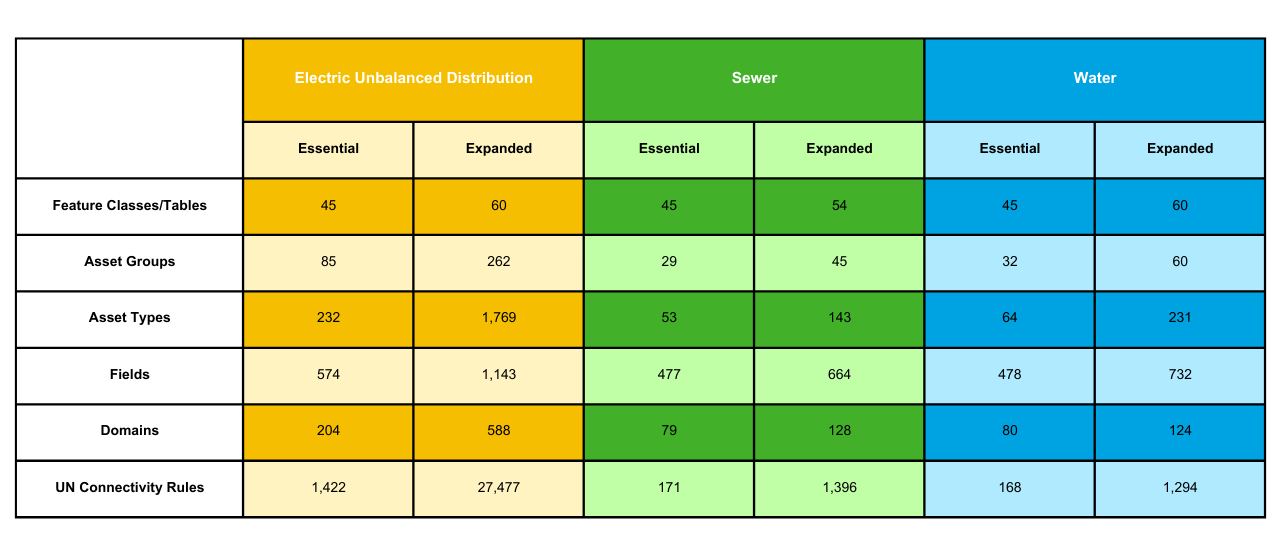The starting point of a Utility Network is the data model, also known as the asset package. Asset packages are file geodatabases which include the base schema and properties to create a Utility Network. These are available within industry-specific Esri Utility Network Foundation Solutions.
Esri recently made a significant update to the Utility Network Foundation Solutions by introducing a new “Essentials” data model. The update includes “Essential” data models for Electric Distribution (Unbalanced), Sewer and Water, providing utilities with enhanced flexibility in their network design and implementation. Alongside the new data model, Esri continues to provide the “Expanded” data model, which has been a longstanding part of the Solution.
The Essentials data model is designed to provide a more customized fit, enabling closer alignment with an organization’s existing schema. It can also be used to create a Utility Network prototype ahead of a full implementation. However, unlike the Expanded data model, the Essential model is not ready for immediate use and does require additional detailed configurations.
Key Differences in the Essential Model
- Reduced Asset Groups and Asset Types: Fewer, more generic Asset Group and Asset Type categorizations.
- Essential Fields Only: Fields required for Utility Network functionality are provided, avoiding unnecessary data.
- Limited Tier Configuration: Does not include multiple tier definitions. For example, electric only contains the Electric Distribution tier.
Choosing the Right Model
Using the Expanded data model allows for a simplified out-of-the-box deployment. However, it does involve significant time and effort to map existing fields to predefined fields and domains. For example, even when there is a direct field match, the process may require converting values from text domains to coded integer domains and ensuring that no data duplication occurs. While this task offers a chance to validate data, it is labor-intensive. Additionally, the end product results in numerous fields which do not contain any data.
Conversely, the Essentials data model simplifies the transition by allowing non-critical fields to be migrated as they are. Automated processes handle data validation and reporting, facilitating a more efficient approach to data migration. This approach enables standardization of critical fields while also providing the flexibility to more easily translate data from source to target. However, there are detailed configurations which must be added to the model.
Strategic Use of Data Models: TRC Can Help
In practice, a hybrid approach proves most effective. The Expanded model’s robust, pre-defined configurations are advantageous for out-of-the-box deployment. But starting with the Essentials model can provide the flexibility needed to address specific requirements and expand as necessary.
Our approach is to leverage the strengths of both models. The choice of base model (Expanded or Essentials) depends on the specific data structure and needs of an organization. Whether beginning with the Essentials model and extending as needed, or starting with the Expanded model and streamlining it, our goal is to tailor the data model to optimize efficiency and effectiveness for an organization’s unique needs.
For more information, check out our related services or contact us today.
Gain
Peace-of-Mind
Partner With TRC’s Tested Practitioners



